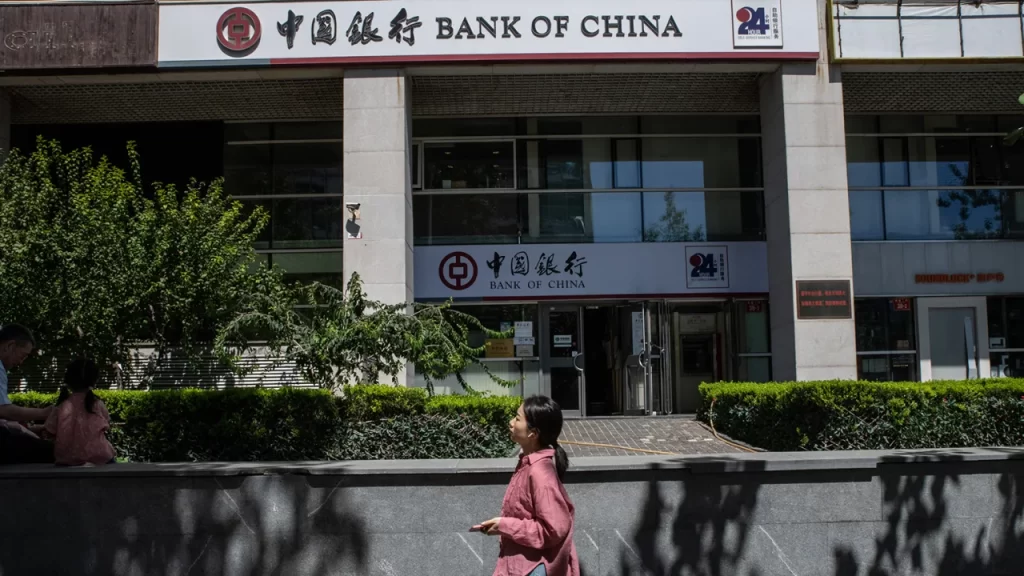
China has rolled out a new batch of stimulus measures to boost the nation’s ailing property market and support a weakening yuan, in its latest attempt to restore confidence in the world’s second largest economy.
Cumulatively, the policy announcements — as well signs of of a pickup in China’s manufacturing sector in August — sent Asian shares modestly higher on Friday.
According to a joint statement by the People’s Bank of China (PBOC) and the National Administration of Financial Regulation (NAFR) released Thursday, minimum down payments for mortgages will be cut to 20% for first-time buyers 30% for second-time buyers nationwide.
Previously, homebuyers in cities such as Beijing and Shanghai had to find down payments of at least 30% to 40%.
In addition, interest rates on new mortgages are also being slashed by about 40 percentage points after the central bank set a lower minimum premium to its benchmark loan prime rate.
The regulators said in a separate statement that rates on existing mortgages for first-home purchases can be renegotiated starting September 25. The regulators have encouraged banks to offer lower rates.
“The drop in the interest rates of existing housing loans can save interest expenses for borrowers, which is conducive to expanding consumption and investment,” the regulators said.
Following the announcement, a dozen of the country’s biggest commercial banks — including the ICBC, China Construction Bank and Agricultural Bank of China — cut their deposit rates Friday by a range of 10 to 25 basis points.
The coordinated move was intended to “pave the way” for banks to cut their mortgage rates based on the regulators’ new requirements, Nomura analysts said.
The new measures could help 40 million home buyers and impact 25 trillion yuan ($3.5 trillion) in mortgages, or about two thirds of the country’s housing loans, state-owned Yicai reported on Thursday, citing people close to the regulators.
“This is a key part of the additional policy easing we have been expecting,” said John Lam, head of China and Hong Kong property at UBS Investment Bank Research. “We view this policy easing as more positive and different compared to the previous ones, as a nationwide policy like this helps strengthen homebuyers’ confidence on property price outlook.”
Capital Economics analysts agreed, writing on Friday: “Stimulus efforts are finally gaining momentum.”
The new measures will reduce the upfront cost of homeownership in many large cities, they added. “If it can also boost wider confidence, then it may be just enough to arrest the downward spiral in the housing market.”
Tackling the currency
Officials have also decided to tackle a slide in the value of the yuan, which has fallen rapidly in recent months as investors’ concerns about the health of the Chinese economy grew.
The PBOC said Friday it will cut, for the first time this year, the amount of foreign currency that banks must hold as reserves to 4% from 6% of their foreign exchange deposits.
The yuan has tumbled recently, as foreign investors pulled out of Chinese assets amid worries over China’s growth and the deepening real estate crisis. The offshore yuan has fallen 6% against the US dollar since April.
Friday’s move by PBOC may alleviate the pressure on the yuan, said Becky Liu, head of China macro strategy at Standard Chartered.
The amount may be insignificant, but the move is symbolic as it “reaffirmed the PBOC’s decisive stance” to curb the yuan’s weakness in the foreseeable future, she said.
Tax relief
And the government is going further to boost household consumption, which accounts for about 37% of China’s GDP.
Effective this year, it will double tax breaks on childcare and education costs, according to a statement by the State Council on Thursday.
Tax relief for taking care of the elderly parents was also increased significantly.
On Friday, data released by Caixin and S&P Global showed the Caixin manufacturing Purchasing Managers’ Index surprisingly swung back to expansion in August.
The index rose to 51, compared to 49.2 in July. It marked the highest level since February, signaling a notable improvement in factory activity.
The reading was more upbeat than the official government survey released Thursday, which showed manufacturing still stuck in contraction in August despite signs of improvement.
“The Chinese economy is showing more signs of stabilization rather than further deterioration,” Larry Hu, chief economist for Greater China at Macquarie Group, wrote in a Thursday research note.
Policy actions over the past month have provided support to stabilize the economy, he said.
“The bottom line is that China’s economy is not out of the woods yet, but it’s not in crisis either,” he said, adding that policymakers need to act more decisively to pull the housing market out of its ongoing downward spiral.